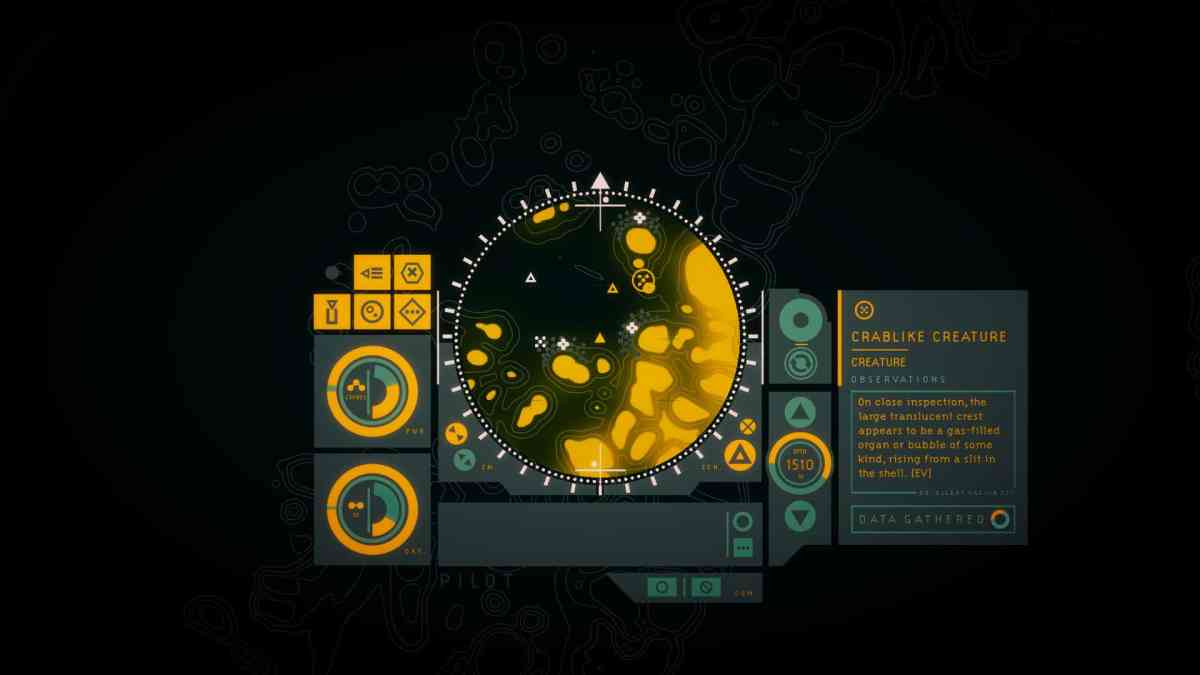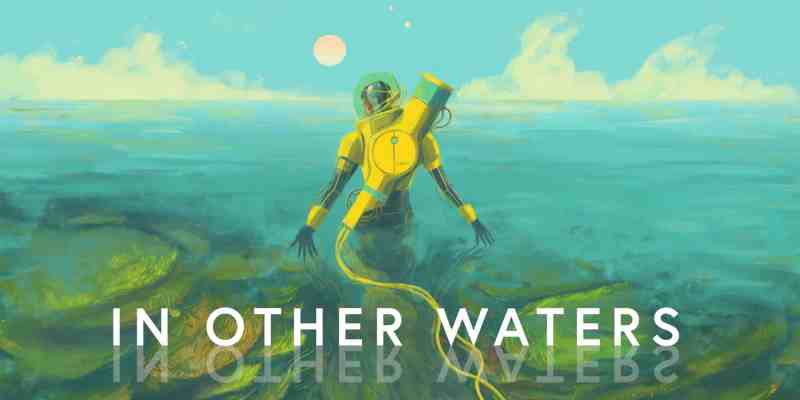The playable prologue demo for In Other Waters, the upcoming first effort from “one-man-studio” Jump Over The Age, begins with a xenobiologist seeking refuge in an antiquated diving suit inhabited by a mysterious artificial intelligence. Stranded in an alien ocean teeming with life, Ellery must work with the AI to explore, research, navigate, and otherwise uncover the secrets of the deep. And most importantly, you play as the AI, not the human biologist.
According to creator Gareth Damian Martin, the premise for the game was “dreamt into existence on a long trip to Greece where I swam in the turquoise Aegean daily. The encounters I had with sea creatures, the changing moods of the sea, as well as my own concerns with our climate crisis, left an imprint on me.”
In Other Waters enjoys relatively minimalist, yet also playful and otherworldly, visual design. Martin told us this came from wanting to “marry traditional game interaction with the flexibility, economy, and evocative nature of text. To create things that felt less like ‘text adventures’ and more like Mass Effect’s galaxy map.”
The gameplay is conveyed through what’s ostensibly a series of elegant interactive UI screens, a conceit that fits perfectly with how an artificial intelligence might perceive and interact with the world. Well-written text and some subtle audio implementation further round things out, making it easy to imagine the world beyond the gentle confine of menus and screens. “I realized that the best way to do this would be to allow the player experience to be mediated through a system which limited their experience of the world, forcing them to rely on text as much as visuals,” Martin explained.
“I think games are incredibly good at getting people to engage their imaginations and working with abstractions of reality that carry a lot of weight,” Martin continued. “For indie devs, this is where we can really show that the medium isn’t about the latest tech or the highest resolution assets, but about emotion, atmosphere, narrative, and ‘feel.’”
In practice, it turns out this emphasis “on signals and text and allowing the player the space to interpret and engage with those elements freely” makes In Other Waters quite immersive indeed. The sound design is subtle, but highly impactful. Some bits of the interface are just cryptic enough that they’re fun to figure out, but easy to use once you know what you’re doing. Plotting Ellery a safe course, scanning for sealife, and collecting biological samples for study (and use) were all simple, enjoyable interactions and often served an additional purpose. For example, by collecting and deploying a certain type of biological sample, I could clear a path blocked by strange, stalk-like organisms.
Ultimately, In Other Waters is a narrative-rich experience steeped in original lore rooted in real-world research. Some pretty meaty thematic and philosophical ideas also help set the stage. But the game’s “dark future” setting “where Earth’s oceans are mostly dead and corporations dominate off-world activities” isn’t the focus. Instead, Martin told us, the story is much more hopeful. “It doesn’t dwell on these unpleasant realities and instead tries to look forward to what might come after such a future, and how we might escape those paradigms into a different way of being.”
Despite the grim backdrop, In Other Waters means to deliver a more intimate, character-driven adventure story. The character relationships in Firewatch and The Last of Us are mentioned as specific inspirations. What this means in practice, Martin explained, is that Ellery will react to how the player responds, but “She also won’t completely change who she is just because you say so. Your responses are more about developing the relationship and expressing yourself within it, rather than pushing her around.”

“After all,” Martin reminded us, “this isn’t a story about saving the universe, or even the planet. It’s about two very different beings confronting the past and its legacy together.”
The prologue experience culminated with a short sequence taking place in a research facility, the “Hub” location in the full game. This Hub was split into numerous tiers, and it seemed like, eventually, each would have its own interactive elements. Martin referred to it as the place “where the ‘science’ happens,” a place where you can “read up on species, analyze samples, and take note of where Ellery suggests you need to look to progress your studies.” In the demo, I was able to store and analyze a few biological specimens I’d helped Ellery collect, which added extra layers of information to a scientific database that will continue to grow throughout the adventure.
In practice, the Hub is a location that’s fully integrated into the story. Martin teases that “many of the most important moments in the game happen there,” in addition to some “small things tucked away” that will reveal themselves under certain conditions. “As you watch the little blip of Ellery working in the Lab, and maybe access her terminal to read her journals, I also intend it to be an intimate space, even if that intimacy is a little strange and uncertain,” explained Martin.
Though my preview time with In Other Waters was relatively brief from start to finish, it managed to leave a very positive impression — particularly how its minimalistic approach to presentation was a near-perfect way to put me in the mindset and viewpoint of an enigmatic AI. I’m looking forward to playing the full game, and by the sound of it, the wait won’t be that long.
In Other Waters is planned to release this spring on Switch, PC, and Mac.
